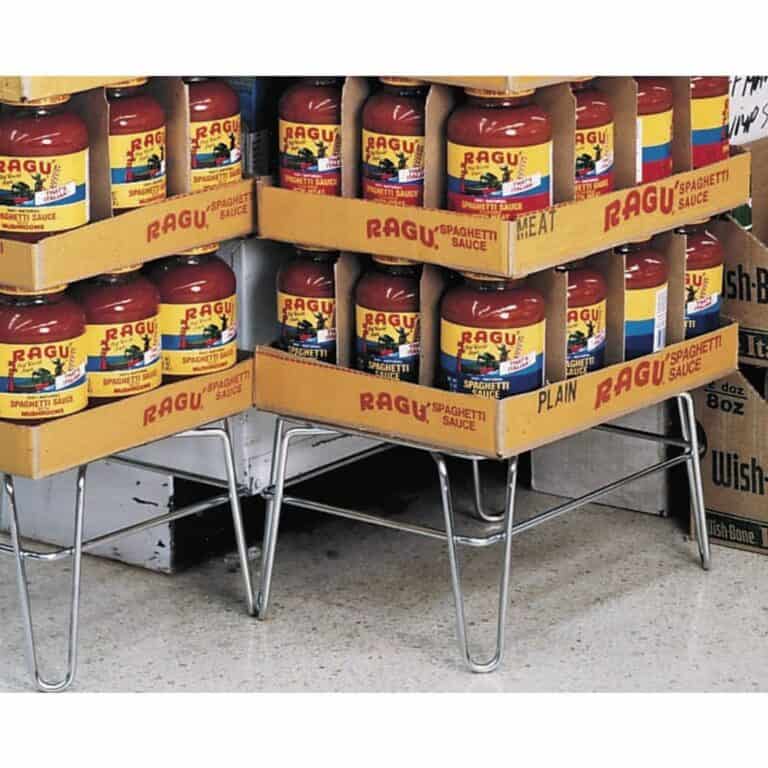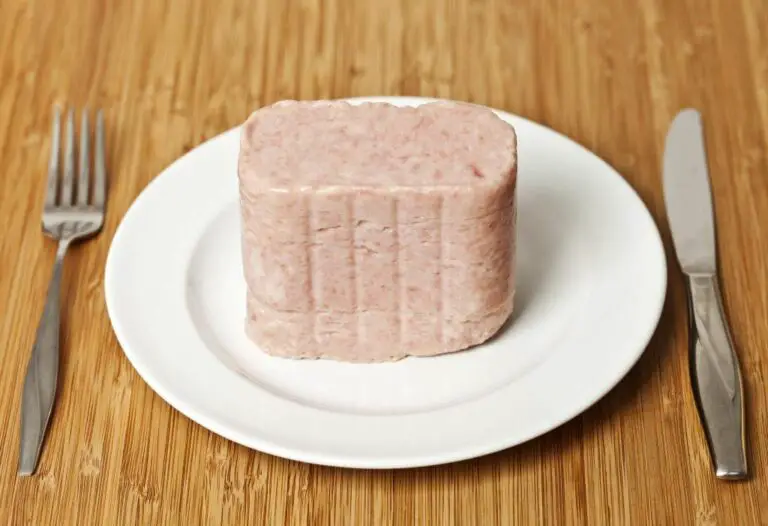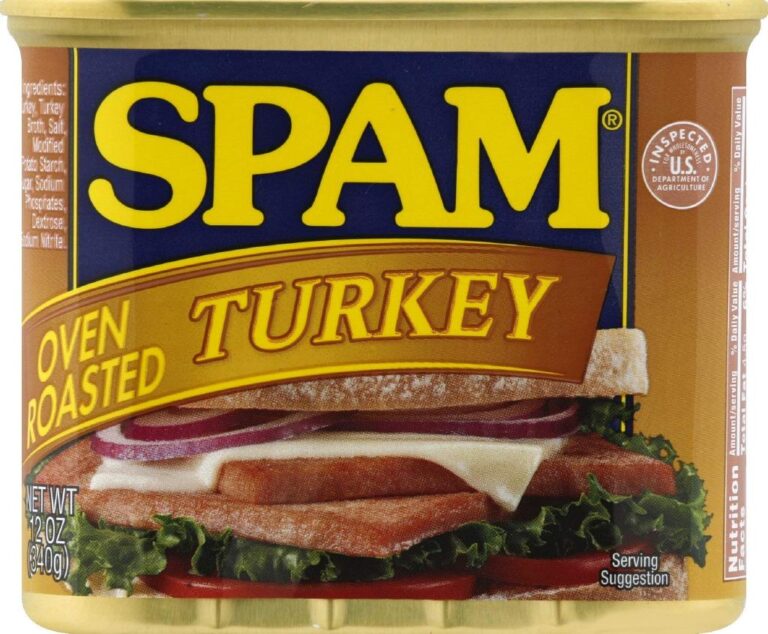Should Spam Musubi Be Refrigerated? How Long Does It Last?
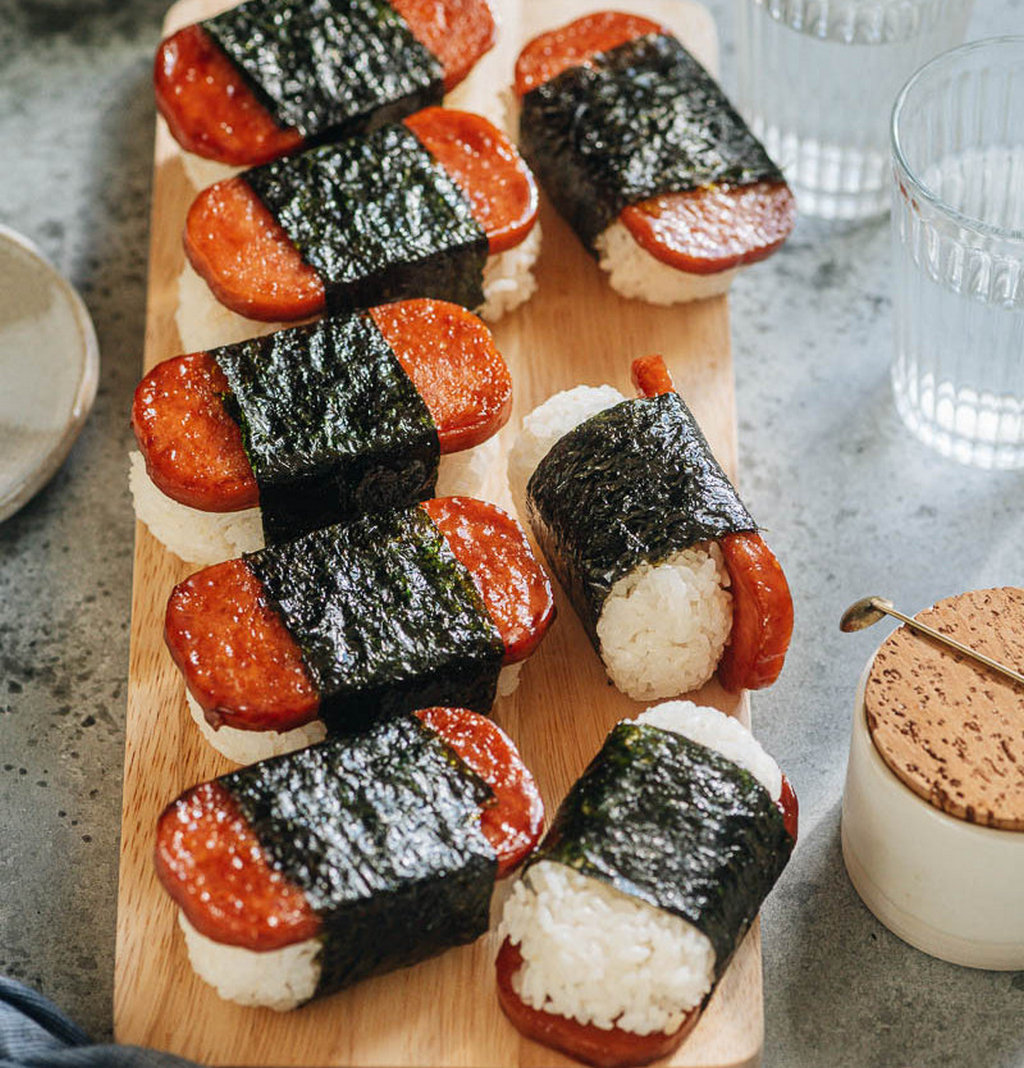
If you’ve ever had the pleasure of biting into a perfectly crafted Spam Musubi, you know that this Hawaiian-Japanese fusion snack is a tasty explosion of flavors and textures. But as you relish that delightful combination of crispy Spam, seasoned rice, and nori, a question often lingers in the back of your mind: “Should I refrigerate it? How long can I keep it fresh?”
Don’t worry; you’re not alone in pondering this culinary conundrum. In this delectable exploration, we’ll journey into the heart of Spam Musubi, uncovering its secrets one delicious layer at a time.
We’ll reveal when refrigeration is your ally and when it’s best to enjoy your Spam Musubi straight from the mold. With practical tips, storage guidelines, and a dash of food science, you’ll become the master of preserving these delectable bites.
So, get ready to savor every morsel and ensure that your Spam Musubi delights your taste buds at its finest.
Understanding Spam Musubi: Origins, Ingredients, and Variations
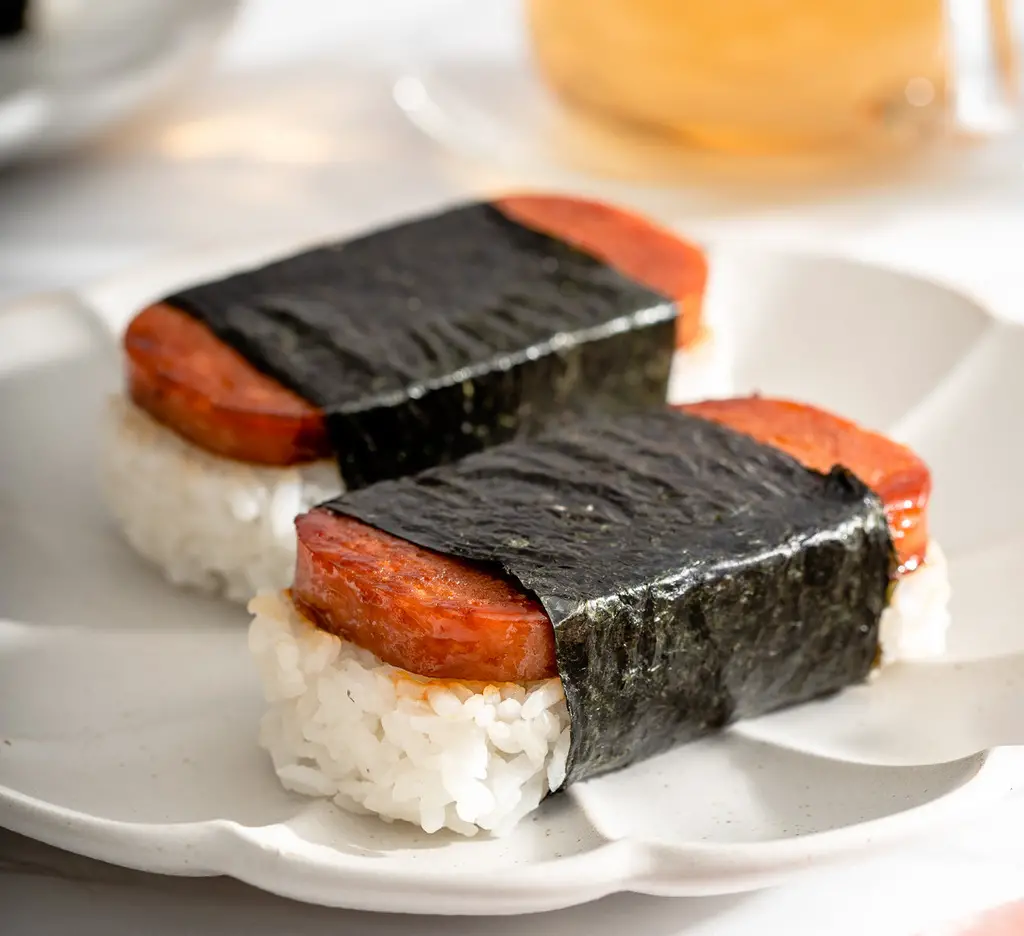
A Bite of History
Spam Musubi, that delightful fusion of Hawaiian and Japanese culinary traditions, has been capturing hearts and taste buds for decades. It’s a simple yet satisfying snack, featuring a slice of grilled Spam (a canned meat product) on a block of seasoned rice, all wrapped up in a sheet of nori (seaweed).
The history of Spam Musubi is a tale of cultural fusion, with its roots tracing back to World War II when Spam, a canned meat product introduced by the U.S. military, became a staple in Hawaii.
Hawaiians took this wartime ration and infused it with Japanese culinary influence to create the iconic Spam Musubi. Today, it’s a symbol of the islands and a mouthwatering testament to the creativity born from necessity.
Key Ingredients and Their Significance
Now, let’s delve into the delicious details of Spam Musubi’s key components. It’s a straightforward yet brilliant combination, consisting of Spam, sushi rice, nori (seaweed), soy sauce, sugar, and Furikake (a rice seasoning).
The Spam, often grilled to crispy perfection, takes center stage, providing a savory and slightly salty punch. Meanwhile, the sushi rice serves as the ideal canvas, seasoned with soy sauce and Furikake, bringing a sweet-savory balance.
The nori, a wrapping of seaweed, not only adds a satisfying crunch but also pays homage to the Japanese influence on Hawaiian cuisine.
Variations of the Traditional Spam Musubi Recipe
While the classic Spam Musubi is a delectable masterpiece on its own, there’s room for creativity and customization. Hawaiians have embraced this snack with open arms, leading to a delightful array of variations.
Some include the addition of eggs, teriyaki sauce, or even pineapple, giving each iteration a unique twist. Whether you’re a traditionalist or a culinary explorer, there’s a Spam Musubi variation to suit every palate. Below, find a quick overview of some popular variations:
| Variation | Description |
| Teriyaki Spam Musubi | Incorporates teriyaki sauce for added sweetness |
| Egg Spam Musubi | Features a layer of scrambled egg for richness |
| Shrimp Spam Musubi | Substitutes Spam with succulent shrimp |
| Chicken Spam Musubi | Utilizes grilled chicken as the protein source |
| Pineapple Spam Musubi | Adds a tropical touch with a slice of pineapple |
Now that we’ve unraveled the history, ingredients, and variations of Spam Musubi, you’re equipped with a deeper understanding of this mouthwatering Hawaiian-Japanese delight. So, whether you’re a traditionalist or eager to explore new flavors, Spam Musubi is a culinary adventure waiting to be savored.
The Art of Crafting Spam Musubi
Before we get into the nitty-gritty of preservation, let’s quickly outline how to make Spam Musubi. This might also help you appreciate the effort that goes into it:
Ingredients:
- Spam slices
- Sushi rice
- Nori sheets
- Soy sauce
- Sugar
- Furikake (rice seasoning)
Instructions:
- Prepare the Rice: Rinse and cook your sushi rice, then season it with a mixture of soy sauce, sugar, and Furikake for added flavor.
- Grill the Spam: Fry Spam slices until they’re golden brown and slightly crispy.
- Shape the Musubi: Place a musubi mold on a sheet of plastic wrap, add a layer of rice, top it with a slice of Spam, and cover with more rice. Press it firmly.
- Wrap in Nori: Wrap the rice and Spam block in a strip of nori, sealing it with a bit of water.
- Slice and Serve: Slice it into bite-sized pieces, and it’s ready to eat.
Now, let’s address the big question: Should you refrigerate Spam Musubi?
Spam Musubi: To Refrigerate or Not to Refrigerate?
The answer to whether you should refrigerate Spam Musubi largely depends on your plans for it. Here’s a simple breakdown:
Eating It Right Away:
If you plan to devour your Spam Musubi within a few hours, there’s no need to refrigerate it. Freshly made Spam Musubi is a treat worth savoring immediately. The warmth of the rice and the crunch of the nori are at their best when freshly crafted.
Keeping It for Later:
If you want to enjoy Spam Musubi over a longer period of time, refrigeration is your friend. The combination of rice and meat can be susceptible to bacterial growth, especially in warm or humid environments. Storing it in the refrigerator can extend its shelf life and keep it safe to eat.
How Long Does It Last? Shelf Life of Refrigerated Spam Musubi
Assuming you’ve chosen to refrigerate your Spam Musubi, you’re probably wondering how long it will stay fresh. The good news is that when stored properly, Spam Musubi can last for several days. Here’s a simple guideline to help you make the most of this delicious snack:
| Storage Period | Quality Retention |
| 1-2 days | Best quality |
| 3-4 days | Good quality |
| 5-6 days | Fair quality |
| 7+ days | Use caution |
Remember, while Spam Musubi can technically be safe to eat for up to a week, the quality starts to degrade after a few days. So, try to consume it within the first 2–4 days for the best experience.
Guide: Can You Eat Expired Spam or Past the Best by Date?
Proper Storage Tips
Here are some tips to ensure that your refrigerated Spam Musubi remains at its best:
- Packaging: Store each Spam Musubi individually in an airtight container or wrap it tightly in plastic wrap. This prevents the rice from drying out and the nori from becoming soggy.
- Refrigeration Temperature: Keep your Spam Musubi in the refrigerator at a temperature of 40°F (4°C) or below. This is the safe temperature range to inhibit bacterial growth.
- Avoid Freezing: Freezing is not recommended for Spam Musubi. It can significantly alter the texture and taste, making it less enjoyable.
- Reheating: If you prefer your Spam Musubi warm, you can reheat it in a microwave for a short time, but be cautious not to overheat it, as it can dry out the rice and make the nori less crispy.
- Label and Date: If you’re making multiple batches, label and date each container, so you know how long they’ve been in the fridge.
Indicators of Spoilage
Sometimes, despite your best efforts, food can spoil. To ensure your safety, here are some signs that your Spam Musubi may have gone bad:
- Unpleasant Odor: If it smells off or has a sour or rancid odor, it’s best to discard it.
- Mold Growth: If you see any mold growth on the rice or nori, it’s not safe to eat.
- Texture Changes: If the rice becomes excessively dry or the nori loses its crispiness, the quality is compromised. These changes in appearance make spamgross;, don’t eat them.
If you notice any of these signs, it’s better to err on the side of caution and not consume the Spam Musubi.
Should Spam Musubi Be Refrigerated? The Verdict
The debate over refrigerating spam musubi is a hot topic among lovers of this popular Hawaiian snack. Some swear by keeping it chilled, arguing that refrigeration preserves the freshness and taste of the ingredients. Others argue that refrigerating it ruins the texture and makes the rice dry. Ultimately, how you store your spam musubi depends on personal preference and the local climate.
A key factor in deciding whether to refrigerate your spam musubi is how long it will last at room temperature. The general consensus is that if properly wrapped or sealed, this snack can last up to 3-4 hours without refrigeration. However, if you plan to keep it beyond this timeframe, especially in warm weather, refrigeration becomes necessary to prevent bacterial growth.
In conclusion, whether or not you should refrigerate Spam Musubi depends on when you plan to enjoy it. If it’s a quick snack, feel free to indulge right away. For longer storage, refrigeration is key to keeping it safe and delicious. Just remember to follow proper storage practices, and your Spam Musubi will reward you with delightful flavors and enjoyable moments. Enjoy this delectable Hawaiian treat while it’s at its best, and savor every bite!
FAQs on Storing Spam Musubi to Keep It Fresh
What are the key ingredients in a classic Spam Musubi recipe?
The key ingredients in a classic Spam Musubi recipe are sushi rice, nori (seaweed), teriyaki sauce, and, of course, Spam, which is typically grilled or pan-fried before being assembled with the other components.
How do you know if Spam Musubi has gone bad?
To determine if Spam Musubi has spoiled, look for signs such as a sour smell, unusual texture, or discoloration. If the rice appears excessively dry or the Spam has an off odor, it’s best to discard it.
Can you freeze Spam Musubi for long-term storage?
Yes, you can freeze Spam Musubi for extended storage. Wrap it tightly in plastic wrap or aluminum foil, then place it in an airtight container before freezi
What are some popular variations of the traditional Spam Musubi recipe?
Some popular variations of the traditional Spam Musubi include adding teriyaki sauce, incorporating fresh or canned pineapple, or substituting the Spam with other ingredients like grilled chicken or tofu.
What are some popular variations of the traditional Spam Musubi recipe?
Some popular variations of the traditional Spam Musubi include adding teriyaki sauce, incorporating fresh or canned pineapple, or substituting the Spam with other ingredients like grilled chicken or tofu.
How long can Spam Musubi be left at room temperature before it spoils?
Spam Musubi should not be left at room temperature for more than 2 hours. After this time, bacteria can multiply rapidly, leading to potential foodborne illnesses.
Are there any health risks associated with consuming unrefrigerated Spam Musubi?
Leaving Spam Musubi unrefrigerated for an extended period can heighten the risk of bacterial growth, potentially causing food poisoning or other gastrointestinal issues. It’s crucial to refrigerate it promptly.
Can you leave Spam Musubi out overnight?
Leaving Spam Musubi out overnight isn’t advisable, as it can quickly enter the temperature danger zone, fostering bacterial growth and making it unsafe for consumption.
How long can refrigerated Spam Musubi last before it spoils?
Refrigerated Spam Musubi can typically last for 2-3 days before it begins to lose its quality and freshness. After this time, it’s best to discard it to avoid any potential health risks.
What are the best practices for reheating refrigerated Spam Musubi?
To reheat refrigerated Spam Musubi, use a microwave or oven, ensuring it reaches an internal temperature of 165°F to eliminate any harmful bacteria. Reheating too much can dry out the Musubi, so use short intervals.
Can you pack Spam Musubi for a picnic without refrigeration?
Packing Spam Musubi for a picnic without refrigeration can be unsafe, especially in warm weather. Use ice packs or a cooler to keep it at a safe temperature (below 40°F) until consumption.


